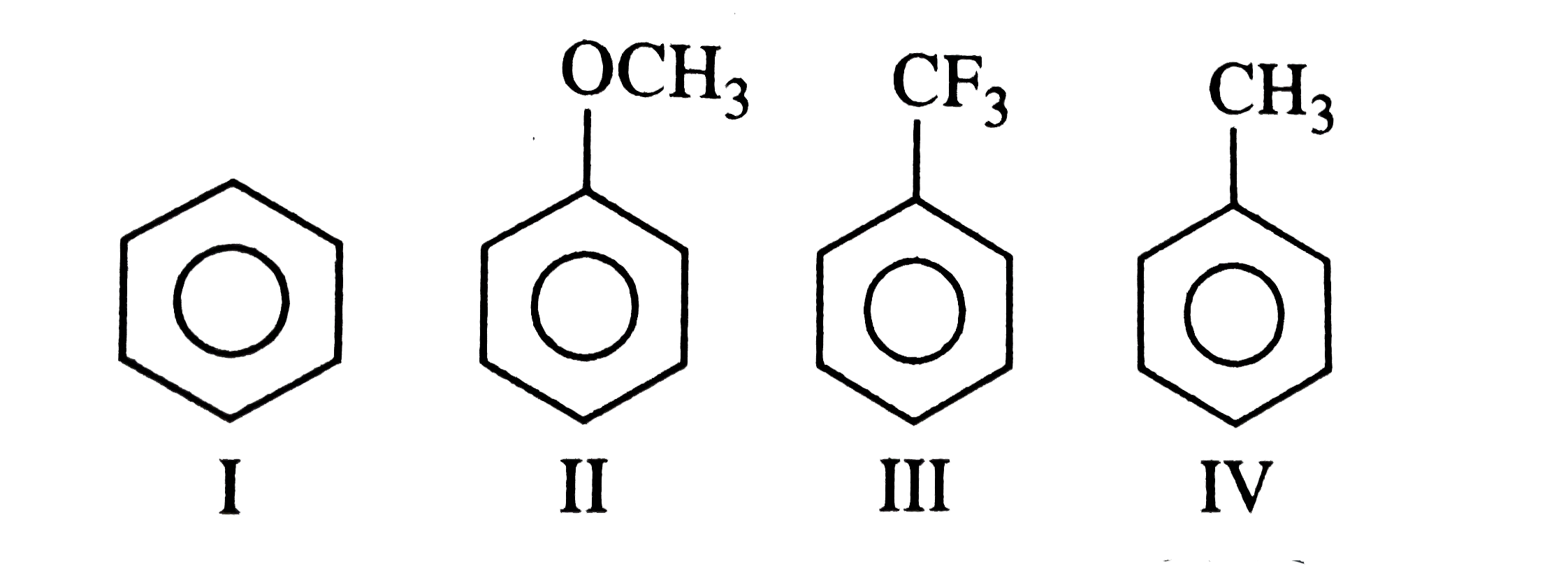Phenol is more reactive than benzene towards electrophilic substitution reaction.
In case of Phenol, the intermediate carbocation is more resonance stabilised.
If both assertion and reason are correct and reason is correct explanation for assertion.
If both assertion and reason are correct but reason is not correct for assertion.
If assertion is correct but reason is incorrect.
If both assertion and reason are incorrect.
The correct Answer is:b
Correct explanation : In phenol , the -OH group is an activating group and actives the benzene ring towards electrophilic subsitution reactions.
Topper's Solved these Questions
- ETHERSBOOK - DINESH PUBLICATIONCHAPTER - ETHERSEXERCISE - INTEGER ANSWER TYPE QUESTIONS
7 Videos
- ETHERSBOOK - DINESH PUBLICATIONCHAPTER - ETHERSEXERCISE - (MCQs)
8 Videos
- ETHERSBOOK - DINESH PUBLICATIONCHAPTER - ETHERSEXERCISE - JEE (MAIN) & OTHER ENGINEERING ENTRANCE EXAMINATIONS
17 Videos
- ELECTROCHEMISTRYBOOK - DINESH PUBLICATIONCHAPTER - ELECTROCHEMISTRYEXERCISE - ADDITIONAL NUMERICAL PROBLEMS FOR PRACTICE
12 Videos
- GENERAL PRINCIPLES AND PROCESSES OF ISOLATION OF ELEMENTS BOOK - DINESH PUBLICATIONCHAPTER - GENERAL PRINCIPLES AND PROCESSES OF ISOLATION OF ELEMENTS EXERCISE - Brain Storming Multiple Chocie Questions
7 Videos
Similar Questions
Knowledge Check
Statement-I: Phenol is more reactive than benzene towards electrophilic substitution reaction.
Because
Statement-II: In the case of phenol, the intermediate carbocation is more reasonance stablized.ABoth assertion and reason are correct and reason is the correct explanation of the assertion.BBoth assertion and reason are correct, but reason is not the correct explanation of the assertionCAssertion is correct , but reason is incorrectDAssertion is incorrect , but reason is correctStatement-I: Phenol is more reactive than benzene towards electrophilic substitution reaction.
Because
Statement-II: In the case of phenol, the intermediate carbocation is more reasonance stablized.AStatement 1 is true, statement 2 is true, statement 2 is a correct explanation for statement 1BStatement 1 is true , statement 2 is true, statement 2 is not a correct explanation for statement 1CStatement 1 is true, statement 2 is falseDStatement 1 is true, statement 2 is trueStatement-I: Phenol is more reactive than benzene towards electrophilic substitution reaction.
Because
Statement-II: In the case of phenol, the intermediate carbocation is more reasonance stablized.AStatement-I is True, Statement-II is True : Statement-II is a correct explanation for Statement-IBStatement-I is True, Statement-II is True : Statement-II is NOT a correct explanation for Statement-ICStatement-I is True, Statement-II is False.DStatement-I is False, Statement-II is True.
More reactive haloarenes in electrophilic substitution reaction is
View SolutionThe most reactive compound towards electrophilic substitution reaction is
View SolutionThe most reactive of the following towards electrophilic substitution reaction is

View SolutionThe most reactive compound towards electrophilic substitution reaction is :-
View SolutionSTATEMENT-1: Phenol is more reactive than benzene towards electrophilic substitution reaction.
and
STATEMENT-2: OH group of phenol is electron donating due to resonance.
View Solution
